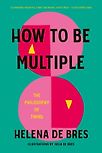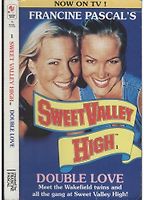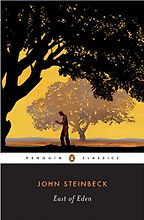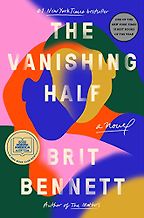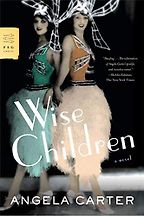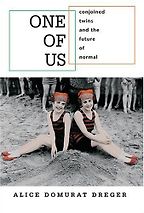Twins are literary gold. We crop up in every genre, for every age, at every level of prestige. Fantasy: Cersei and Jaime Lannister in A Game of Thrones. Elizabethan drama: Viola and Sebastian in Twelfth Night. Kid lit: Shasta and Corin in The Horse and His Boy. Booker-Prize-winning fiction: Rahel and Estha in The God of Small Things. As for horror, sci-fi, crime, and romance: think of every doppelgänger, clone, and switcheroo plot ever.
What makes twins such narrative regulars? We’re eye-catching and charming, sure. Our duality is ripe for comedies of confusion, parallel storylines, and last-minute twists (“omg it wasn’t her, it was her long-lost twin!”) But our biggest drawcard may be our close connection to a host of philosophical conundra, an association that lends a note of gravitas to even the schlockiest of twin tales. The sources of personal identity, the nature of love, the existence of free will, the ethics of objectification, the politics of race: whatever your existential or ethical jam, there’s probably a twin narrative out there that touches on it or makes it central to the story.
Francine Pascal, Double Love
Yes, this is the definition of YA trash, and no, I’m not apologizing for it. I read this book at least twenty times as a tween and it likely unlocks the key to my psyche. The inaugural volume in a series that ran from 1983-2003, it introduces us to Jessica and Elizabeth Wakefield, a pair of impossibly beautiful sixteen-year-old twins who dominate the social scene in equally perfect suburban California.
With the subtlety of a cheerleading squad, the series enacts a standard move in stories about twins by starring a pair of highly binarized personalities. Liz is the Good (read: vanilla) Twin: a prim, long-suffering bore of a superego. Jessica is the Evil (read: smoking hot) Twin: a narcissistic fireball of id.
Every girl in my elementary school obsessively aligned herself with either Jessica or Elizabeth. (Team Liz for the win!) This habit of dumping twins—and humans in general—into sharply opposed camps is regrettable, but it has its uses too. The Sweet Valley series is a junior instance of what many more sophisticated stories do for us later in life: they animate contrasting, maybe incompatible, ways of being that we can try out ourselves, ideally with a little more finesse.
John Steinbeck, East of Eden
One aim of Steinbeck’s epic is to undermine the simplistic binary thinking that twins like the Wakefields symbolize. East of Eden sets up an initially stark contrast between sweet, sensitive, blond Aron and violent, awkward, dark-haired Cal, then progressively complicates it. By the end, it’s Cal who has our sympathies: he’s sincerely worked to escape the legacy of his dark uncle Charles and twisted mother Cathy (your initial letter threatens to determine your destiny in this book!), whereas Aron has proved superficial and spineless, incapable of real intimacy and growth.
The philosophical question that’s really animating the story isn’t the drawbacks of polarized thinking, but the limits of human freedom. Aron and Cal are only the latest iteration of a moral struggle that has wracked their family for decades. Their role in the novel is to illustrate the possibility that all of us might escape the confines of our original character and circumstances and reach freely toward either good or evil.
Brit Bennett, The Vanishing Half
This 2020 best-seller adds a political twist to the Pascalian-Steinbeckian use of twins to explore divergent life paths. After the light-skinned Black twins Desiree and Stella Vignes part ways at age sixteen, Desiree returns to their childhood home in rural Louisiana while Stella heads off for an affluent lifestyle in Los Angeles, where she passes as white. The truth comes out at a Beverly Hills dinner party when Desiree’s daughter, on a track scholarship to UCLA and working as a caterer, runs into her wealthy aunt, the spitting image of her mother. (“Can I interest you in some shrimp cocktail…Mom?!”)
The novel’s conceit—how different could your life be if you changed just one significant fact about yourself?—is a question twins often inspire in fiction. An author can treat twinhood as purely an intellectual experiment or, as in this morally compelling novel, use it to make a political point. What kind of country would allow a person’s racial identity to have such a consequential impact on how their life goes? Oh yeah, ours.
Angela Carter, Wise Children
Singletons are always instrumentalizing twins, for aesthetic and philosophical purposes, and also for entertainment and money. If people are going to exploit you, why not exploit the opportunity? That’s what twin chorus girls, Dora and Nora Chance, do in Carter’s bawdy carnival of a novel. Illegitimate daughters of a great Shakespearian actor, himself a twin, the Chance sisters monetize their twinhood at the lower levels of London’s theatrical community and have a grand old time doing it.
As the novel progresses, the apparently binary distinctions between high and low class, and Shakespeare and burlesque, increasingly blur. The whole thing is hugely entertaining, but what I love most about this wonderful novel is the unsentimental picture it paints of a strong, intimate twinship. Our culture tends to laud romance over siblinghood, but throughout the Elizabethan twists and turns of their family history, the one thing Dora and Nora always have is each other. It’s enough to raise some big philosophical questions about what true love looks like and enough to make a singleton weep.
Alice Domuran Dreger, One of Us: Conjoined Twins and the Future of Normal
In the nineteenth and early twentieth centuries, conjoined twins were a fixture on the freak show circuit, where they were referred to as “double monstrosities.” The label was offensive but had an important grain of truth tucked inside it. “Monstrosity” comes from the Latin monstrare, to show. Twins are often felt to embody a message or lesson, parting a curtain before the secrets of the universe. Singletons, however, often pick the wrong lesson.
For Dreger, the most important thing conjoined twins reveal to us is the flawed nature of the Western understanding of autonomy. Liberals tend to think humans can only be free, and flourish, if they carefully guard the physical, mental and emotional boundaries between themselves and other humans. Conjoined twins flagrantly violate those boundaries, as do many separate twins, and in fact many singletons. Dreger argues that we could all do with seeing our conjoinment with others not as a threat to our autonomy and humanity but an integral part of it.
This is an academic book, not a novel, but it’s beautifully written, and it’s likely to radically alter your take on selfhood, freedom and love. Which is something any pair of twins can do, if you pause to think a little more carefully than usual about what it is we might be showing you.
Helena de Bres is the author of How to Be Multiple: The Philosophy of Twins. The book is illustrated by her twin, Julia de Bres.
March 18, 2024. Updated: June 7, 2024
Five Books aims to keep its book recommendations and interviews up to date. If you are the interviewee and would like to update your choice of books (or even just what you say about them) please email us at [email protected]
Five Books interviews are expensive to produce. If you've enjoyed this interview, please support us by donating a small amount.

